Dwayne “The Rock” Johnson is absolutely killing it in Hollywood right now and aside from his acting chops, he can thank his hard work throughout the years and dedication in the gym for that. But the Rock didn’t achieve his iconic physique overnight.
Oh no… the Rock’s workouts over the years consisted of thousands of grueling hours in the gym and a diet that would anyone want to throw in the towel.
But, these sessions have paid off big time and if not for them, he likely wouldn’t be the second highest paid actor in the World right now. He’s got so much going on having just filmed the Fast and the Furious spin-off Hobbs and Shaw but he still devotes time to inspire his fans.
And he has been kind enough to share with us what he did to get big and shredded for Jumanji.
Check out Dwayne Johnson’s workouts below…
Tips/advice for the Jumanji workout, or ‘Bravestone’ routine:
Before attempting the same workout as the Rock in the hopes of getting as huge as him, you’ll need to know a few things because this is no ordinary workout routine. So, make sure to go over the points below…
Level Up Your Fitness: Join our 💪 strong community in Fitness Volt Newsletter. Get daily inspiration, expert-backed workouts, nutrition tips, the latest in strength sports, and the support you need to reach your goals. Subscribe for free!
But first, it’s important to note that this is by no means a beginner’s workout as the volume is much too high. Even people with intermediate levels of training experience should be careful to not over exert themselves.
Overtraining is a real thing which can cause unwanted side effects like a weakened immune system, negative psychological changes, chronic fatigue, anemia and much more. (1, 2)
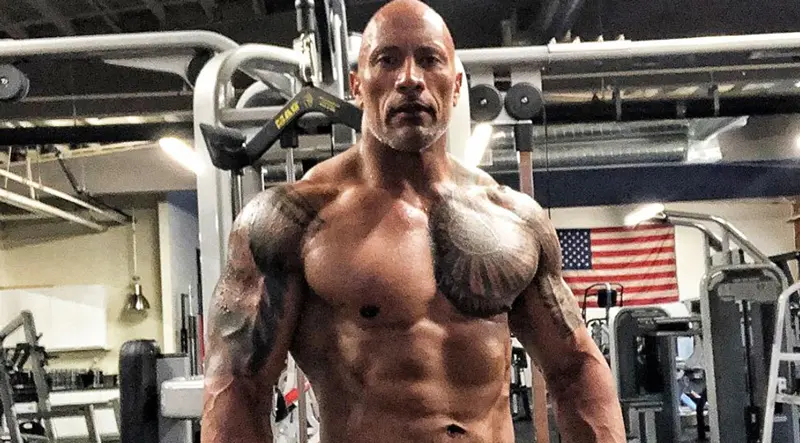
Nutrition habits also play a big part in whether or not someone is equipped to do these workouts. Such a high volume and high-intensity routine requires you to intake a lot of nutrients. When you undereat and don’t recover adequately, the symptoms of overtraining appear.
- The workouts consist of a mix between compound and isolation exercises to stimulate growth and work each muscle thoroughly.
- Use a weight light enough to where you won’t burn out from the sheer amount of volume.
- Make sure to get plenty of energy-producing carbs in your system since they are the only macronutrient which can break down fast enough to fuel high-intensity exercise. Complex carbs like sweet potatoes, whole grains, and rice are a great source of a lasting fuel source. (3)
- You’ll also need a lot of protein to rebuild your muscle fibers so eat foods like chicken breast, lean steaks, or eggs before a training session. Then have a big protein shake afterward! (4)
- Supplement with an intra-workout carb source to give you added fuel if possible.
- Have a big post workout meal or shake with added ingredients for recovery. Studies show post-workout whey protein intake to increase performance and muscle mass. (5)
- Drink lots of water before and after your workout. Performance, strength, and muscle-building potential are highly dependent on adequate hydration. (6)
Note: We added substitute exercises for certain machines which may not be available at some fitness centers.
Day 1: Back Training
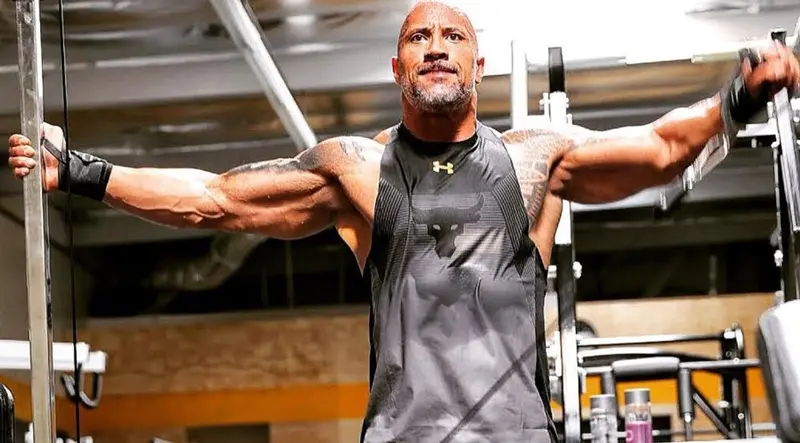
- One-arm pulldown Hammer Strength machine 3 x 15 (Do one-arm cable pulldowns if you don’t have access to a Hammer Strength machine).
- Reverse Grip Cable pulldown or Hammer Strength Pulldown 5 sets x 12 (Rest 30 sec between sets)
- One-arm dumbbell row 3 x 12 (Pause after each rep for 2 seconds)
- Hammer high row ” Charles Glass style” 4 x 12 (Hold two dumbbells with an overhand grip in front of you and then lift them to chest level)
- Wide grip cable row 4 x 12
- Superset W/Rope pullover 5 x 12 (Rest 45 sec between supersets)
For the rope pullover, attach the rope high on the cable machine and then pull the rope down with arms straight squeezing the lats during the exercise.
- Hyperextension w/hands behind head 3 x 15
- Dumbbell shrug 4 x 20
Day 2: Chest Training
- Standing cable fly 7 x 15 (Rest 30 seconds between sets)
- Star Trac incline fly 4 x 12 (Do incline cable flyes as an alternative if you don’t have access to a Star Trac machine)
- Hammer strength incline 3 x 10 (Alternate from the full extension)
Some gyms don’t have a hammer strength incline machine. So, you can use any incline machine or cables as an alternative.
- Neutral grip flat dumbbell press 3 x 12
- Flat dumbbell fly superset W/ pushups 4 x 12 (Rest 45 seconds between supersets)
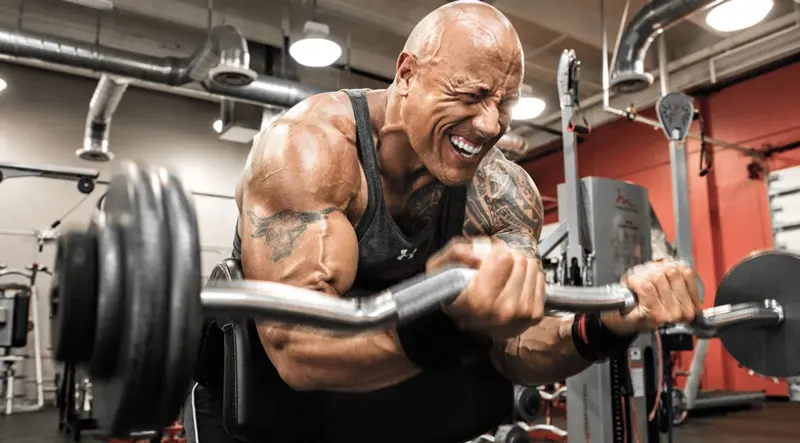
Day 3: Leg Training
- Barbell glute bridge 4 x 12 (Hold the last rep for 10 seconds)
- Single leg extension 3 x 20
- Leg press 4 x 25 (Rest 90 seconds between sets)
- Walking lunges 3 x 24
- Vertical leg press 3 x 20 (Rest 60 seconds between sets)
- Single leg lying leg curl 4 x 15
- Glute ham raises 4 x 8-12
Day 4: Shoulder Training
- Reverse fly machine 5 x 15 (Rest 30 seconds between sets)
- Incline bench bent lat raise 4 x 12
- Dumbbell lateral shoulder raises 3 x 25, 20, 15, 12, 20 (Perform sets and reverse back down the rack)
- Dumbbell front raise 4 x 10 (Palms up) and 10 reps with a neutral grip
- Standing dumbbell shoulder press 4 x 20 (Rest 30 seconds between sets)
Day 5: Arm Training
- Cable curl 2 x 20, 15, 10, 15, 20 (Perform sets and reverse back down the rack)
- Incline EZ bar spider curl 4 x 12
- Superset W/ standing EZ bar curls 8 x 10 (Do slow negatives)
- Dumbbell preacher curls 5 x 10 (Rest 30 seconds between sets)
- Reverse grip pushdown 2 x 25, 20, 15, 12, 20 (Use an EZ curl bar to relieve avoid wrist stress)
- EZ bar skull crusher to close grip bench press 4 x 12-20
- Single arm cable kickback 3 x 12
- Rope pushdowns to leaning overhead extension 3 x 15
Days 6 & 7: Rest
Do abs and calves 2/3 times per week before the workouts.
Include planks and hanging leg raise isometric holds with feet up for 30 seconds.
Do 15 minutes of cardio after every workout.





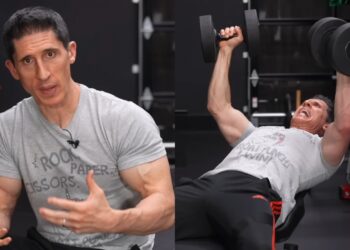

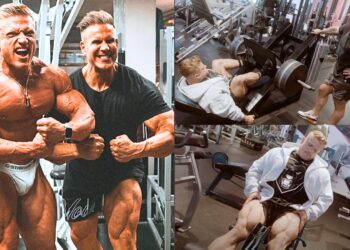

Explain the sets such as, Dumbbell lateral shoulder raises 3 x 25, 20, 15, 12, 20 (Perform sets and reverse back down the rack)
For the dumbbell lateral shoulder raises, you’re going to do a bit of a pyramid with your sets and reps. You’ll be doing five sets with a varying number of reps:
First, you’ll do 25 reps.
Then you’ll drop down to 20 reps for the second set.
For the third set, you’ll do 15 reps.
Then you’ll go even lower to 12 reps for the fourth set.
Lastly, you’ll ramp back up to 20 reps for the fifth set.
When the instructions say to “reverse back down the rack,” it means that as you decrease the number of reps, you should also decrease the weight you’re lifting. So, you’ll start with a heavier weight for the 25 reps, then use lighter weights as you go down to 20, 15, and 12 reps. For the last set of 20 reps, you’ll pick a weight that’s challenging but doable for those last 20 reps. It’s like a roller coaster for your muscles – starting heavy, going lighter, and then finishing strong!